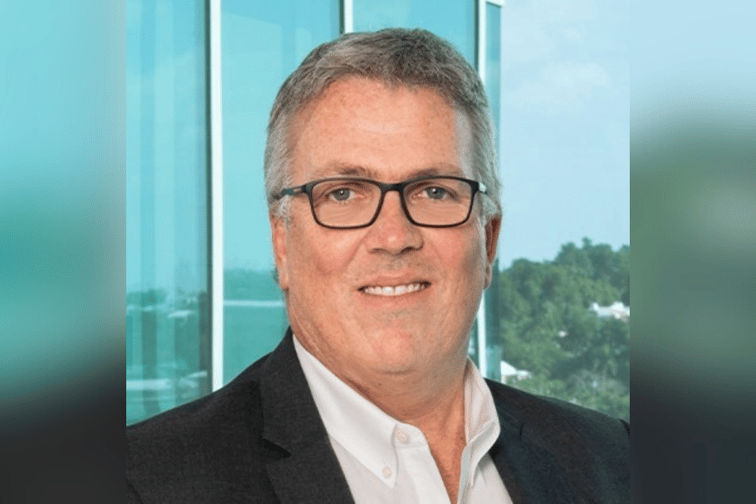

For Christian Dunleavy (pictured), group chief underwriting officer at Aspen, the importance of a data-driven mindset coupled with the indispensable role of human judgment is key in navigating complex risk scenarios.
He told Re-Insurance Business that he was rather fortunate to begin his career in the P&C world at Renaissance Re – something which ultimately defined how he sees and approaches underwriting.
“It was very data-driven, quite quantitative, but also understanding that there was a lot of judgment and interpretation involved,” he explained.
And it was this rapid pace of technological innovation that ushered in a new era of risk assessment and management – notably the transformative impact of computing power and data analytics, which facilitated the quantification and analysis of such emerging risks as cyber threats. However, Dunleavy cautions against complacency, highlighting the perennial challenge of staying abreast of evolving risk landscapes.
“The computing power, the datasets are bigger... but there’s also more risk in the world now,” he told Re-Insurance Business. “Cyber wasn’t really a risk at all 25 years ago – not in the context it is today. The ability to apply that philosophy has been pretty stable. We’re trying to leverage a lot of the advancements that have been made recently in computing power and the ability to sort through big datasets, and so it feels like we’re on the cusp of another major step forward. [Namely] being able to harness some of the growing capabilities of generative AI.”
Dunleavy is certainly not alone in his perception of the growing importance of AI in the insurance industry. While generative AI is impacting almost every market out there, in insurance, it’s having a transformative impact on almost every arm of the business. According to research from Xceedance, a global provider of strategic operations support, in order to reap the full merits of AI, insurers need to acclimate to having AI make key decisions around claims recommendations and coverage levels.
Aside from rising AI, central to the industry’s ongoing discourse is the concern surrounding catastrophe risk. Dunleavy elucidates the intricacies of cat risk management, acknowledging both the strides made in modeling and the inherent limitations of such approaches.
“No two cats are the same... there’s always a shift... both in how the industry ingests that risk and the changes happening in the environment,” he explains. “There’s definitely a heightened awareness around some of the changes in climate and weather - separating those two is hard. And then there’s always earthquakes - it’s been relatively quiet in the major industrialized areas. However, there’s been a lot of quakes in emerging economies such as Turkey, Morocco, and, more recently, Japan.”
For reinsurance, managing risks around global catastrophes is all in a day’s work. It doesn’t necessarily mean it gets easier, or more predictable, with time, however. According to a recent report from Aon, in 2023 the world’s top natural disasters caused $380 billion in economic damage – signifying a big jump in costs compared to 2022 claims.
Navigating the regulatory landscape presents a formidable challenge for insurers too, with governments playing a pivotal role in ensuring market stability and consumer protection.
“There’s places for public-private partnerships... but we also have to be very careful about the amount of CAT exposure that governments are essentially putting on to taxpayers,” he cautioned. “I think that’s a bit of a blind spot right now. Whereas I believe there is capacity in the private sector at the right price – there’s capacity willing to take on some of that risk at the right levels and at the right price. And it’s going to take a while to find that new level, with all of the changes that are happening in both the way governments are thinking about it and investors.”
Bermuda’s insurance market stands as a testament to the power of collaboration and regulatory foresight. Dunleavy, a Bermudian himself, extols the virtues of Bermuda’s regulatory framework, which fosters collaboration between industry stakeholders and government entities.
“The genuine partnership between the industry groups and the Bermuda government is one of the things that I think other bigger countries will really struggle to replicate,” he told Re-Insurance Business. “The importance of the sector to Bermuda is really outsized. And for that reason, it plays a very large role in decision making.
“I think the way this works well on the island is that they have a very clear understanding of what some of those decisions would mean from the industry perspective. So, the partnership has been strong. There’s a lot of regulatory changes often being imposed on Bermuda because I think [it] is quite misunderstood by some of the global economies. And they do, at times I would say, target Bermuda with a lack of understanding of what we truly are.”
This is one of the aspects that Dunleavy believes would be super beneficial to analyze – getting regulators from overseas on to the island to study the model of the Bermuda insurance industry.
“I think they’re often surprised at how real and vibrant and tangible and innovative and important of a global industry it actually is,” he told Re-Insurance Business . “I really enjoy that side of what I do - being involved in the industry groups; you learn from a lot of other good people along the way. However, you also feel like you’re [ensuring] the industry is having a positive contribution into what’s ultimately 65,000 people on a rock in the middle of the ocean.”
